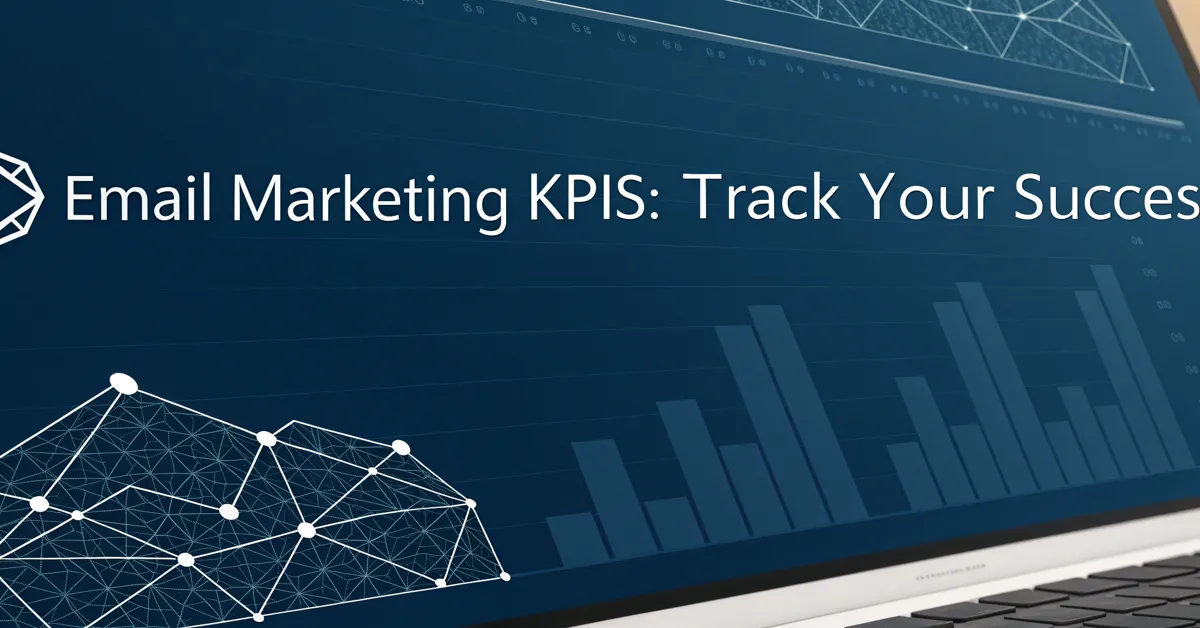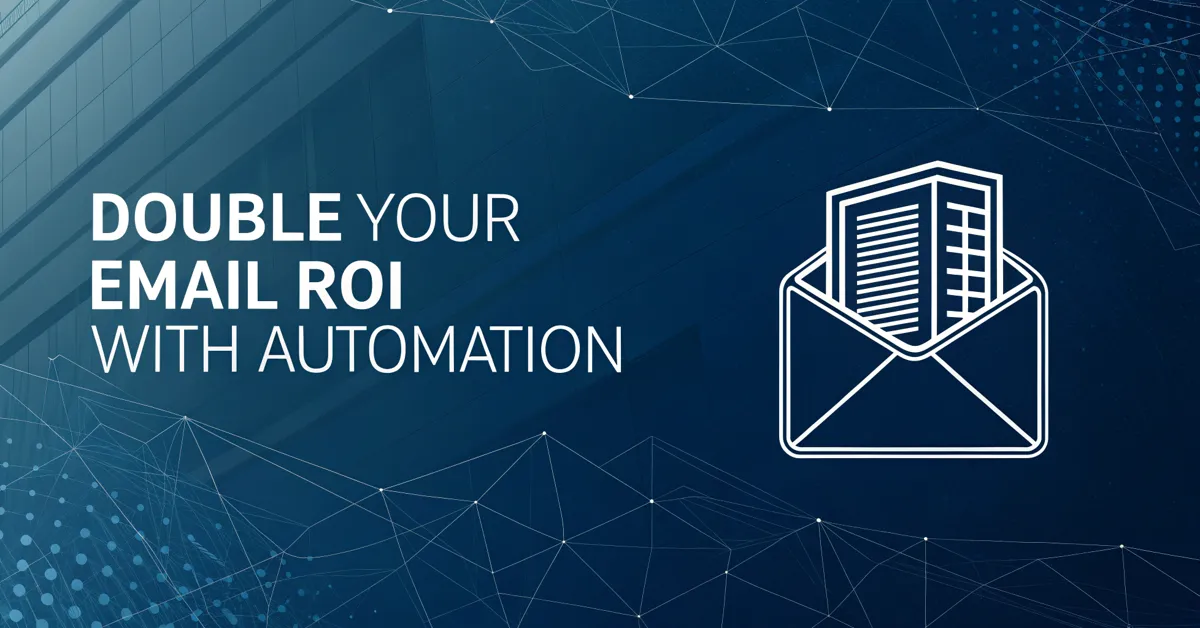Are you pouring time and effort into email marketing, but unsure if it’s truly working? You’re not alone. Many marketers send emails, hoping for the best, but they often lack a clear view of what’s actually happening. It’s like trying to sail a ship without a compass. This article will serve as your compass, guiding you through the key performance indicators (KPIs) that will tell you if your email campaigns are on course.
It’s not enough to simply send emails. You need to measure your results and tweak your strategy to achieve optimal outcomes. This is where the right email marketing KPIs come in. They help you understand what’s working, what isn’t, and how to boost your email performance. We’ll walk through the most essential metrics, offering clear explanations and ways to track them, so you can really see the results of your email efforts.
What Are Email Marketing KPIs?
Email marketing KPIs are the specific metrics used to measure the success of your email campaigns. They’re the vital data points that show how your emails are performing and whether they’re reaching your goals. These indicators help you track progress, identify areas for improvement, and prove the worth of your email marketing efforts.
Without a clear understanding of your KPIs, you’re essentially shooting in the dark. You won’t know if your subject lines are compelling, if your content resonates, or if your calls to action are effective. Tracking these key numbers lets you turn guesswork into informed decisions, and drive real business growth with your email marketing.
Why Tracking Email Marketing KPIs Matters
Simply put, if you don’t track your email marketing KPIs, you won’t know if your efforts are succeeding. It’s like driving a car without knowing your speed or your fuel level. Here are some key reasons why this tracking is vital:
- Measuring Performance: KPIs provide concrete data to see how your email campaigns are doing. Are your emails getting opened? Are people clicking on your links? These metrics show you your actual campaign success.
- Identifying Areas for Improvement: By seeing which metrics are underperforming, you can focus on what needs to be changed. This lets you optimize elements of your campaign for better results.
- Justifying Marketing Spend: Showing the impact of your email marketing efforts in numbers helps prove its value. These numbers can justify your budgets and future investments.
- Optimizing your Email Strategy: KPIs help you understand your audience’s behavior. You can adjust your strategy according to their needs and preferences.
- Achieving Business Goals: By consistently tracking and acting on your KPIs, your email marketing will align better with your overall business goals.
In short, tracking KPIs is not an option, but a must. It helps refine your strategy, use your resources wisely, and grow your business effectively.
Essential Email Marketing KPIs To Track
Now, let’s get to the heart of the matter: the specific email marketing KPIs that you should be watching. It is not about tracking every number, but about watching the most important ones. These metrics fall under different categories and offer insights about various parts of your email strategy.
Open Rate
The open rate is the percentage of your subscribers who open your email. It gives a general sense of how many people are even engaging with your email at all. It’s a basic starting point to gauge if you’re grabbing your audience’s attention.
How to Calculate It:
(Number of emails opened / Number of emails sent) x 100
What a Good Open Rate Is:
A good open rate typically falls between 15% and 25%. It can vary greatly depending on factors such as your industry, your audience, and the type of email you’re sending. For instance, a welcome email might have a higher open rate compared to a regular promotional email.
What Influences It:
- Subject Line: A compelling subject line can make or break an email. It needs to spark curiosity and make users want to know more.
- Sender Name: Using a familiar and trusted sender name will boost the chance of your email getting opened.
- Send Time: Sending emails when your audience is most likely to check their inbox is also key.
- List Hygiene: Keeping your email list clean and removing inactive subscribers ensures you’re not sending emails to people who never engage.
What to Do if Your Open Rate is Low:
- Test different subject lines. Experiment with different styles to see what works.
- Clean your list. Remove unengaged subscribers to get a more accurate view of your metrics.
- Send emails at optimal times. Try to find the times when most of your audience opens their email.
Click-Through Rate (CTR)
The click-through rate (CTR) is the percentage of recipients who click on a link in your email. This is a key number that shows how engaging your content is, and whether your calls to action are working. It’s not enough for people to open your email; they must also click on your links to take the actions you desire.
How to Calculate It:
(Number of clicks / Number of emails delivered) x 100
What a Good CTR Is:
A good CTR usually ranges from 2% to 5%. It depends on the industry, your audience, and the purpose of your email. A transactional email, such as an order confirmation, might have a higher CTR compared to a generic newsletter.
What Influences It:
- Content Quality: Relevant, useful content is key to driving clicks. Make sure your email body gives enough incentive to click.
- Call to Action (CTA): Clear, direct CTAs tell the reader what you want them to do. Use strong verbs and make the CTA button visually pop.
- Link Placement: The position of your links affects whether they get clicked. Place important links where they’re easy to see and access.
- Email Design: A well-designed and visually appealing email is more likely to get clicks than one that looks chaotic or dated.
What to Do if Your CTR is Low:
- Improve your content. Make it more interesting, and directly address the needs of your audience.
- Review your CTAs. Make sure they’re clear and compelling. You may need to reword them to make them more actionable.
- Check your link placement. Try putting key links higher up in the email.
- Try different design layouts. Consider using more visuals, or try a simpler layout for your email design.
Conversion Rate
The conversion rate measures the percentage of email recipients who complete a desired action. It goes past simply clicking on your links and includes completing the real actions that matter to your business. This can be anything like purchasing a product, subscribing to a service, or downloading a resource.
How to Calculate It:
(Number of conversions / Number of emails delivered) x 100
What a Good Conversion Rate Is:
A good conversion rate is very specific to your industry and your type of email. It can range from 1% to 10% or even higher. E-commerce sites often target higher rates, but other businesses may consider a 2% conversion rate good enough.
What Influences It:
- Offer Relevance: The offer in the email has to match what your audience needs. Your subscribers have to be interested in the product or service you offer for a conversion to take place.
- Landing Page Optimization: The page your links lead to also needs to be relevant, and easy to navigate, and it should have clear calls to action.
- User Journey: A smooth user experience throughout the buying process is crucial. Remove any potential roadblocks that can stop people from converting.
- Email Content Relevance: It’s crucial that the email content is relevant to the offer. The user needs to feel that they are getting exactly what they were promised in the email.
What to Do if Your Conversion Rate is Low:
- Review your offers. Make sure your offerings are compelling and suitable to your audience.
- Optimize your landing pages. Make sure the page your users land on is well-designed and easy to navigate, with very clear call to action.
- Check user experience. Walk through the entire buying process to find and fix any problems.
- Test Different Offers: See what types of offers generate the best conversion rate.
Bounce Rate
The bounce rate refers to the percentage of emails that could not be delivered. These are emails that are either “hard” or “soft” bounces. Hard bounces are permanent delivery failures (due to invalid email addresses), while soft bounces are temporary (full inboxes). A high bounce rate shows serious issues with your email list, and your sender reputation.
How to Calculate It:
(Number of bounced emails / Number of emails sent) x 100
What a Good Bounce Rate Is:
A good bounce rate should be below 2%. A high bounce rate is a red flag that can signal bigger problems, like using outdated lists, or not keeping your list clean.
What Influences It:
- List Hygiene: Sending emails to outdated or invalid addresses will result in bounces.
- Email Authentication: Lack of proper authentication (SPF, DKIM, DMARC) can cause your emails to be rejected.
- Email List Source: The way you built your list is key. If you bought an email list, it’s likely full of invalid addresses.
- Server Issues: Temporary issues can affect delivery rates. These can include issues on your server, or the servers on the receiver’s side.
What to Do if Your Bounce Rate is High:
- Clean your email list. Remove hard bounces immediately to improve your delivery rates.
- Validate your email list. You can use tools that check if an email address is active. This helps catch bad addresses before sending.
- Authenticate your emails. Set up SPF, DKIM, and DMARC to make sure your emails get delivered properly.
- Check your sending reputation. Use tools that let you monitor how email providers see your domain, and fix any issues that may exist.
Unsubscribe Rate
The unsubscribe rate is the percentage of people who opt out of your email list after receiving a specific email. Although it can seem like a bad thing at first, it’s normal and good for your email list to have subscribers leaving over time. Tracking this metric shows how well your content resonates with your audience. A high unsubscribe rate shows your content is failing to match your subscribers’ needs or expectations.
How to Calculate It:
(Number of unsubscribes / Number of emails sent) x 100
What a Good Unsubscribe Rate Is:
A good unsubscribe rate is less than 0.5%. Rates above that may show that your audience is not getting the content they want.
What Influences It:
- Content Relevance: Sending irrelevant or unengaging content leads to high unsubscribe rates.
- Email Frequency: Too many emails can annoy subscribers and make them want to opt out.
- List Segmentation: Sending the same emails to everyone on your list can cause high unsubscribe rates from specific segments.
- Onboarding Process: A bad email onboarding process may lead to high unsubscribe rates as the user may feel that they were promised one thing, and got another.
What to Do if Your Unsubscribe Rate is High:
- Assess your content. Make sure your emails are relevant, and are interesting to your target audience.
- Adjust your sending schedule. Try not to send emails too often, or too seldom. Experiment to find the right balance.
- Segment your list. Send specific emails to targeted groups within your audience. This may include interests, demographics, or their stage in the sales funnel.
- Improve your onboarding process: Make sure your users know what to expect in the first few emails.
Spam Complaints
The spam complaint rate is the percentage of email recipients who mark your emails as spam. It’s one of the worst metrics to track. Spam complaints damage your sender reputation and result in lower deliverability. The goal is always to keep spam complaint rates as close to 0% as possible.
How to Calculate It:
(Number of spam complaints / Number of emails sent) x 100
What a Good Spam Complaint Rate Is:
A good spam complaint rate is below 0.1%. Anything over that shows your emails are causing a lot of frustration and can result in your emails being placed in spam folders more often.
What Influences It:
- Sender Reputation: If you have a poor sending reputation, more of your emails will be marked as spam. This will also cause them to be placed in spam folders, or even be completely rejected.
- Email Content: Emails that look or read like spam, tend to be marked as such. Watch out for keywords, or phrases that are often used in spam emails, such as “free”, “money”, or “earn from home”.
- List Quality: Sending emails to people who did not subscribe, or who haven’t given explicit consent will cause more spam complaints.
- Unclear Unsubscribe Option: Not having a clear way for users to unsubscribe can lead to people marking emails as spam, rather than having to look for the unsubscribe button.
What to Do if Your Spam Complaint Rate is High:
- Review your sending practices. Only send emails to users who have given you their consent.
- Improve your content. Avoid spam-like words, and create a better email layout that looks professional.
- Make it easy to unsubscribe. Have a clear unsubscribe button, and let users leave at any time.
- Monitor your sender reputation. Use email deliverability tools that can track your domain’s reputation.
Forward/Share Rate
The forward/share rate measures the percentage of email recipients who forward your email to others, or share it on social media. This metric goes past your usual metrics, and it shows how engaging your content is and how valuable your subscribers find it. These are good signs that your audience really likes your emails, and is willing to share them.
How to Calculate It:
(Number of forwards/shares / Number of emails delivered) x 100
What a Good Forward/Share Rate Is:
A good forward/share rate depends on your industry and audience. Rates above 0.5% are considered good, and rates of 1% or above are very good.
What Influences It:
- Content Quality: Only high-quality, engaging content gets shared.
- Share Prompts: Including clear prompts in your email is key. A clear call to action can make it easier for your users to share your email.
- Social Sharing Buttons: Adding buttons that make it easy to share your email on social media helps people share the email quickly.
- Incentives: If you reward people for sharing your email, you may see higher rates. Incentives can include prizes, discounts, or early access to an upcoming product.
What to Do if Your Forward/Share Rate is Low:
- Upgrade your content. Make sure it’s truly unique, useful, and interesting.
- Include sharing prompts. Add a text in your emails that asks people to share it.
- Add social media buttons. Place easy-to-use social media buttons throughout your emails.
- Offer sharing incentives. Add rewards to encourage your audience to share.
Revenue Per Email
Revenue per email measures the amount of revenue generated for every email you send. It shows the economic effectiveness of your email campaigns, and it gives a clear view of the return on your investment in email marketing. This is a good KPI to track, especially for e-commerce companies.
How to Calculate It:
Total revenue generated from email / Number of emails sent
What a Good Revenue Per Email Is:
A good revenue per email depends on your industry, prices, and products. However, you should aim for a consistent increase over time.
What Influences It:
- Offer Quality: Making sure your offer is relevant, and compelling is key to driving sales.
- Email Content: Your email content needs to create excitement and show clear value.
- List Segmentation: Sending specific emails to specific segments of your list will greatly improve your revenue per email.
- User Journey: The buying process from the email to the purchase should be as smooth as possible.
What to Do if Your Revenue Per Email is Low:
- Review your offers: Make sure the product and service you are offering is desirable, and matches your audience’s needs.
- Improve your email content. Include clear, strong CTAs, and offer a great preview of the products and services in the emails.
- Segment your list. Target different users with highly targeted offers that will likely interest them.
- Optimize your user journey. Make sure buying is easy, and that the checkout process is seamless.
How to Track Email Marketing KPIs
Now that you know what KPIs to track, let’s discuss the tools and methods you can use to track them. Most email marketing platforms provide detailed analytics dashboards with these metrics.
Email Marketing Platforms
Your email service provider (ESP) is the main place to track most of your email marketing KPIs. These platforms often provide a wide variety of data including open rates, CTRs, bounce rates, unsubscribe rates, and spam complaints.
Popular ESPs like Mailchimp, Constant Contact, Sendinblue, and HubSpot all offer robust analytics tools. They allow you to:
- Monitor campaign performance in real time: See how your emails are performing as you send them.
- Track engagement metrics: Monitor opens, clicks, conversions, and unsubscribes.
- Segment your audience: Track your different audience segments based on the campaigns they receive.
- Analyze trends over time: Monitor the performance of your campaigns over a given time frame, and track improvements.
- Download data for more analysis: Export your data and create your own reports, and charts to see your results.
Google Analytics
While ESPs are vital, Google Analytics is another good source of data. This tool helps you gain deeper insight into user behavior after they click a link in your emails.
Google Analytics helps you track:
- Website traffic from emails: See how much traffic is coming from your email campaigns.
- User behavior on your site: See which pages users visit, how long they stay, and what actions they take.
- Conversions that came from emails: Track if users who visit your site from an email end up making a purchase or other actions.
To use Google Analytics with your email marketing, you need to set up UTM (Urchin Tracking Module) parameters in your email links. UTM parameters are small text codes you add to the end of your URLs to track the source, medium, and campaign name for your emails. This allows Google Analytics to attribute traffic and conversions from your emails correctly.
Third-Party Analytics Tools
Besides your ESP and Google Analytics, various third-party analytics tools can give more specific insights into your email performance. Some of these include:
- Email on Acid: This tool helps you test how your emails render on various devices and email clients.
- Litmus: Much like Email on Acid, Litmus provides email rendering tests, along with email analytics and deliverability tools.
- Return Path: This tool focuses on email deliverability, by monitoring your sender reputation and your inbox placement rate.
- Mixpanel or Kissmetrics: These tools offer a more in-depth view of user behavior. They can track more complex user interactions and conversion funnels beyond simple email metrics.
Using KPIs to Improve Your Email Marketing
Tracking your KPIs is just the first part. You also need to analyze what the numbers mean, and then take action. Here are some steps on how to turn your data into action:
Set Clear Goals
First, set clear, achievable goals for your email marketing campaigns. What results are you looking for? Do you want to increase traffic, generate more leads, drive sales, or something else? Make sure that your KPIs are aligned with these goals, so you are watching metrics that actually matter.
For example, your goals may include:
- Increase click-through rates by 10% in the next month.
- Increase your conversion rates by 5% in the next quarter.
- Decrease your unsubscribe rate to below 0.5% this month.
With clear goals, you can measure your progress and change your email strategy if things are not going well.
Analyze Your Data
Next, regularly analyze your KPI data. Don’t just watch the numbers, you need to really dig into the reasons behind them. Ask questions such as:
- Why are open rates low for a particular campaign?
- Why are subscribers not clicking on links in certain emails?
- What is causing a high bounce rate?
- Why do more people unsubscribe from certain emails, compared to others?
By understanding the reasons behind your numbers, you can spot issues, and start putting steps in place to improve your campaigns.
A/B Test Your Emails
A/B testing involves sending different versions of your email to a small part of your audience, and watching which version performs the best. This is a great way to test different elements of your email campaigns such as:
- Subject lines: Test different versions to see which one grabs more attention and generates higher open rates.
- Email content: Test varying messages, tones, and structures to see which one resonates with your audience.
- CTAs: Test different calls to action, and their placement in the email to see what performs best.
- Design layouts: Test different email designs and images to see how they affect engagement.
A/B testing lets you change your email campaigns based on data, rather than guesswork.
Optimize Continuously
Email marketing is not a “set it and forget it” process. You need to continuously watch your results and adjust your strategy. Based on your KPIs, focus on changing what isn’t working, and keep doing more of what is working.
- Clean your email list. Regularly remove unengaged subscribers and invalid email addresses.
- Segment your list. Send more targeted, and relevant content to specific segments of your audience.
- Improve content quality. Make sure your content is useful, compelling, and matches your audience’s needs.
- Use automation. Set up automated email sequences based on different user actions and behaviors.
- Keep learning. Keep up with the latest email marketing trends, and always experiment with new techniques.
The Takeaway: Email Marketing Success is Measurable
Email marketing is not a matter of luck, but a science that can be measured. By consistently tracking your email marketing KPIs and acting on the results, you will make smarter choices, and improve your results over time. Start by understanding and tracking these essential metrics, and use the data to build a strategy that truly delivers.
With each step, you’ll gain a deeper view of your audience, enhance your message, and see your email campaigns yield better results. It takes consistent work and data-driven insights, but it is the way to grow your email marketing success, and drive business growth over time.





